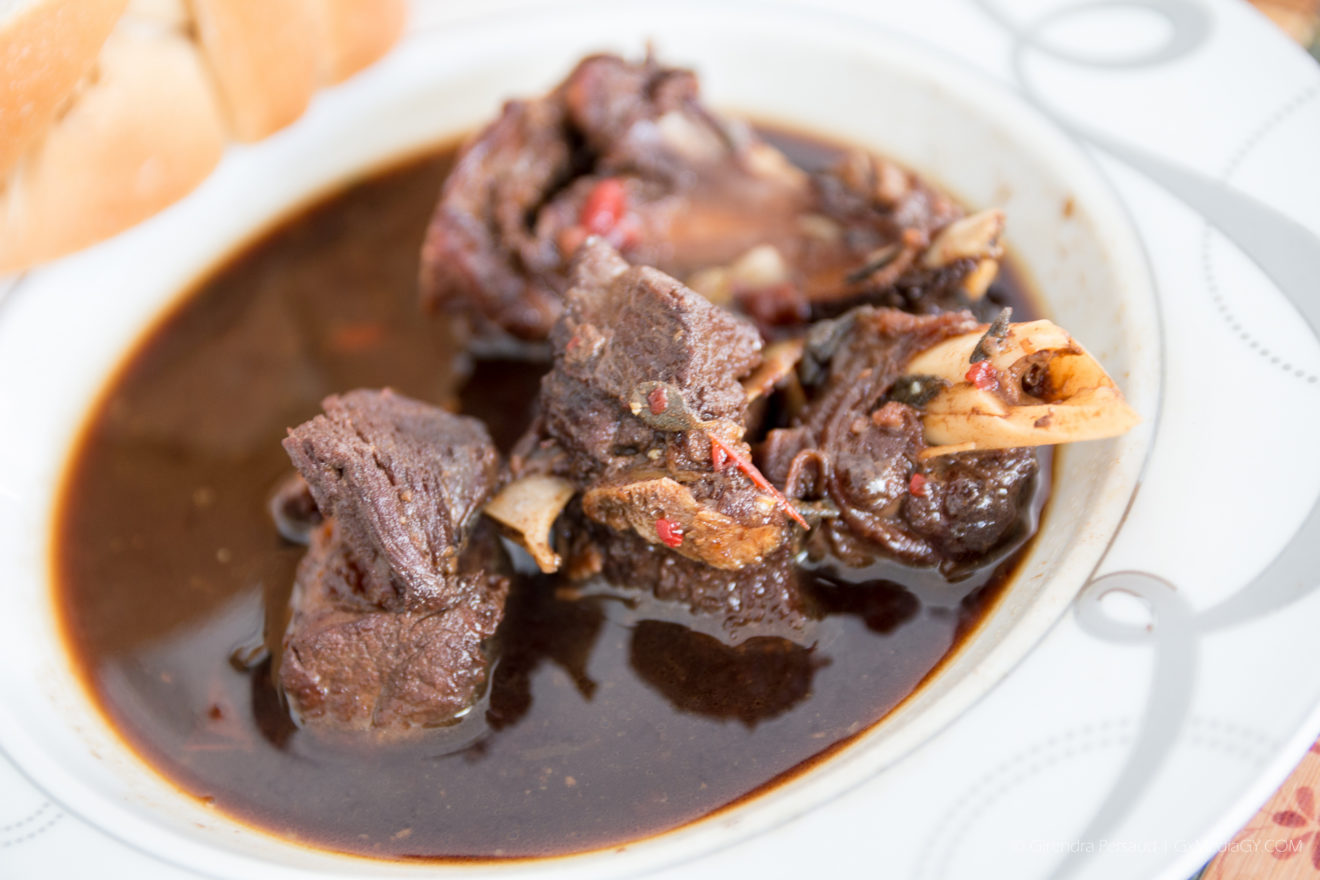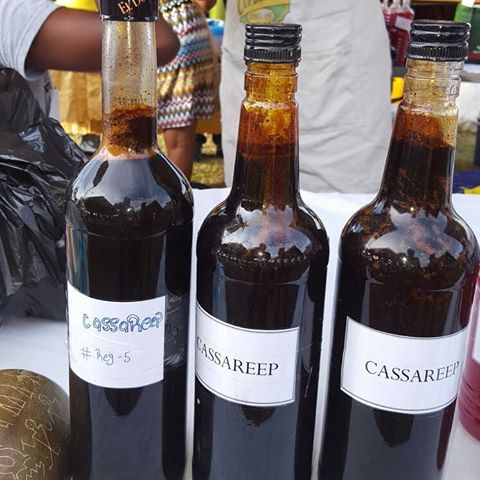Cassareep is the concentrated juice of the bitter cassava which forms the basis of the West Indian dish, “pepperpot”, native to South America. Cassareep is a flavoring for food in which the juice is boiled until it reduces and caramelizes, forming a thick and delicious syrup. The juice is boiled long and slowly to remove any poisonous elements and impurities. The result is a thick brown liquid, cassareep. It comes from the creativity of the Guyanese Amerindian, indigenous peoples to Guyana. As such, it is used to make one of Guyana’s national dishes, pepperpot.
Origin of Cassareep
History has it that it was originated around 1825-35; apocopated variant of earlier cassarepo. Research has it that Amerindians were the ones who invented the cassareep.
How to Make Cassareep
As mentioned earlier, cassareep is made from the juice of the bitter cassava. The cassava is peeled, washed and grated to extract the juice. After which the pulp is placed in a porous cloth and squeezed to extract the juice. The juice is boiled for a considerable time, often with cinnamon, a bit of brown sugar, cloves, and sometimes even a bit of cayenne pepper for a spicier version. It’s then simmered long and slowly. The end result is a thick brown liquid that is both safe and tasty.
However, not all cassavas render the same amount of juice. It depends on their size and maturity. Older cassavas tend to produce little juice. Signs of age include small, dark spots in the flesh or traces of mold.
Eating bitter cassava raw is a death wish; it contains a compound that the human body converts into hydrogen cyanide. Always peel the cassava well and boil, then simmer, its juice for a prolonged period of time. This kills the poisonous compounds. You’ll know it’s safe when the juice reaches a consistency almost like molasses, but not quite as thick.
Uses of Cassareep

The Famous Pepperpot
Cassareep is used to make one of Guyana’s great national dishes, pepperpot. It not only gives pepperpot its distinctive flavor, but it also acts as a preservative. Once cooked, pepperpot can remain at room temperature for days without spoiling because of its cassareep content. Cassareep has antiseptic qualities that act to preserve cooked meat. Just bring the dish back to a boil in the morning and again in the evening of each day if you want to leave it on the stove top.
Cassareep can also be used to add color and depth of flavor to any dish. Guyanese love to make a dish called stew chicken whereby cassareep is added to the meat. Some people even add cassareep to their Caribbean Christmas cake to add to its signature dark color.
Buying and Storing Cassareep
If you don’t want to make your own cassareep, you may be able to purchase it in Latin American markets. It’s imported from Guyana. You can also purchase it online, but make sure the seller is reputable, such as with a starred rating from Amazon.
Cassareep will keep in an airtight glass jar or container for up to three weeks.
Natural meat preservative
Warm weather can make preserving food difficult. But in the tropical South American country of Guyana, people have long had a solution: the thick, black, caramelized syrup of the bitter cassava tuber. Cassareep is a seasoning with a long history, and its antiseptic and preservative properties, it’s said, allow meat cooked with the syrup to last without refrigeration for several days.
Cassareeep in Guyana
Cassareep is a common ingredient in Guyanese sauces. But it’s most essential in pepperpot, Guyana’s national dish, which is a stew made with oxtail or pork, spiced up with Scotch bonnet peppers, and always seasoned with cassareep. The dish is eaten on Christmas morning with slices of plait, or braided bread, and cassareep’s antibacterial properties allow it to sit out for days without going bad. Some accounts describe pepperpots stewed continuously for years, with cooks simply adding more meat and cassareep as needed. Occasionally, they “even lasted the lifetime of the cook.”
Nutritional facts
- Serving Size: 1 tsp (5.4g grams)
- Amount Per Serving
- Calories from Fat 0
- Calories 4.1
- % Daily Value*
- 0%Total Fat 0g grams
- 0% Saturated Fat 0g grams
- Trans Fat 0g grams
- Polyunsaturated Fat 0g grams
- Monounsaturated Fat 0g grams
- 0%Cholesterol 0mg milligrams
- 0%Sodium 8.6mg milligrams
- 1%Potassium 18mg milligrams
- 0%Total Carbohydrates 0.9g grams
- 0% Dietary Fiber 0g grams
- Sugars 0.8g grams
- Protein 0g grams
- 0% Vitamin A
- 0.4% Vitamin C
- 0.2% Calcium
- 0.3% Iron
- Percent Daily Values are based on a 2000 calorie diet.
Calorie Free Cholesterol Free Fat Free Saturated Fat Free Low Sodium
Nutritional sub-recipe for 1 tsp:
Serving Ingredient Calories
3.3 g vinegar 0.6
1.11 g molasse 3.2
0.85 g lime juice 0.2
0.15 g soy sauce 0.1
Watch how it is made
Reference
- https://www.dictionary.com/browse/cassareep
- https://www.thespruceeats.com/what-is-cassareep-2138254
- https://www.atlasobscura.com/foods/cassareep-sauce-pepperpot







